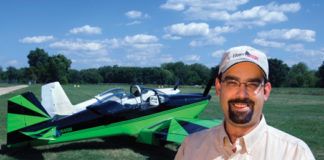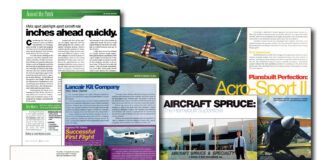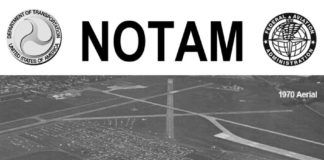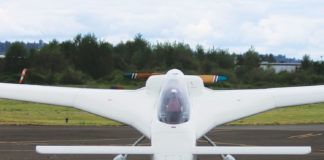Lets
M
y morning ritual probably isn’t a lot different than most. With a hot mug of life-giving caffeine in front of me, I take a virtual tour through the world of homebuilding. In addition to the handful of builder lists that flood my email inbox every day-many of them from Matt Dralles Matronics Aircraft Email Forums-I scan several more web forums.Almost without exception, Ill find a thread dealing with new technology-glasspanel flight instruments and electronic ignition are often the topics-in which a poster has asked about field experience, reliability, ease of installation or any number of other subtopics germane to the subject. And, almost without exception, a self-described realist will pop up encouraging at the very least caution toward the new technology, though sometimes it bleeds over into an Ill never use equipment like that myself and if you do you’ll die. OK, maybe not that strident, but we’ve all seen something close to this kind of remark.
What I find most interesting is that the issuer of such comments often has little to no personal experience with the equipment and, sometimes, feels compelled to post news reports of some Russian satellite having massive software problems as evidence that we should all go back to needle-ball-airspeed flying. Maybe its just me, but these Luddite comments couched in the tone of fatherly concern strike me as just a bit out of place in our world of forwardlooking aircraft .
Im all for taking a measured, conservative approach to the development of new technologies-it partly explains why I still have a pair of big old Bendix magnetos on the Sportsman-but lets rely on genuine, relevant data and real-world experience before skewering anything beyond the insect-in-amber tech familiar to pilots. Sherman and Peabody can go back. I wont.
As you can see from the panel shot above, (see the PDF) Ive been fling with the new Dynon software that improves data presentation on the EFIS-D100 and D10A, and that adds data logging to the EMS-D120. Ive been hugely impressed by Dynons approach to developing new features, which are vetted in the lab, then among a small number of aircraft in the family, and then finally with a group of public beta testers of which I am a member. This last software version didn’t get to the public group until Beta 8, and had four more updates in six weeks until arriving at a release candidate around the middle of June. In each version there were bugs, sure, but minor ones, and a dozen subtle improvements were implemented in part based on feedback from the group.
One of those improvements is a peak-EGT detector coupled to a percent-of-power calculator thats done properly, in my view. It fairly accurately determines when you are rich or lean of peak EGT and uses different algorithms to determine power based on which side of peak the engines operating on.
So for those whose suspicions of new-fangled technology might be based on the belief that one guy sits in a lab and cranks out code for immediate release to the public, guess again. My experience in this regard says that, for Dynon at least, the development process is careful, measured and conservative. Oh, and on the subject of software, the problems I had with my GPS talking to the EFIS, autopilot and Garmin SL30 nav/com through the RS-232 serial stream seem to have been cured by an update to the Garmin 496s operating system.
Such a Deal!
There’s good news for KITPLANES subscribers. By the time you read this, the contents of our web site, including magazine back issues and aircraft directories, will be available to subscribers free of charge. In addition, the cost of the electronic-only subscription will be reduced to $26.95 a year.













